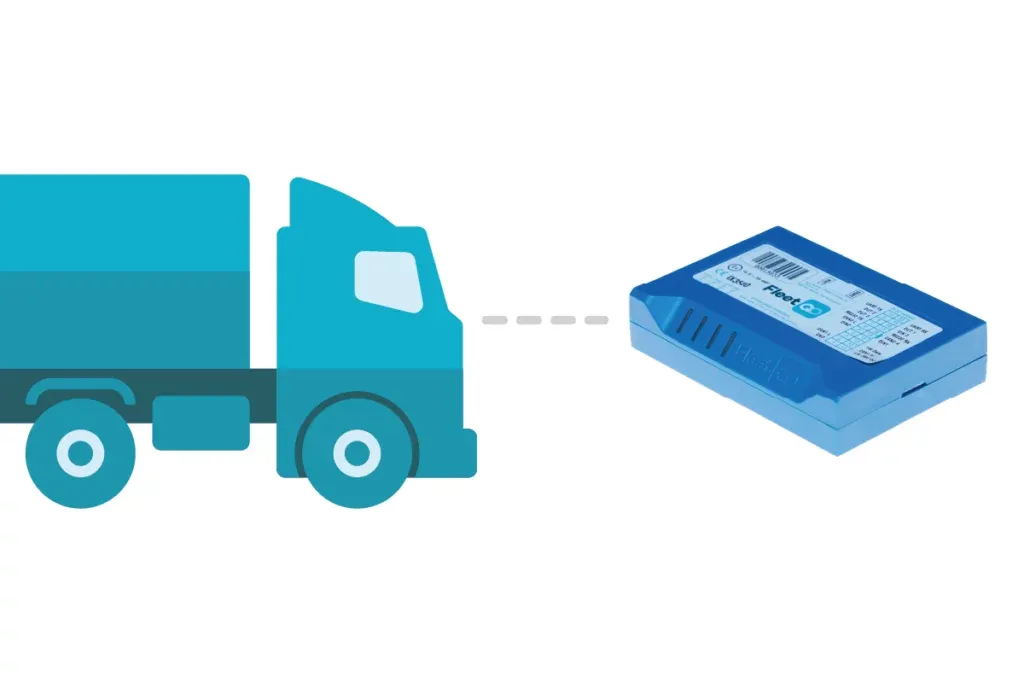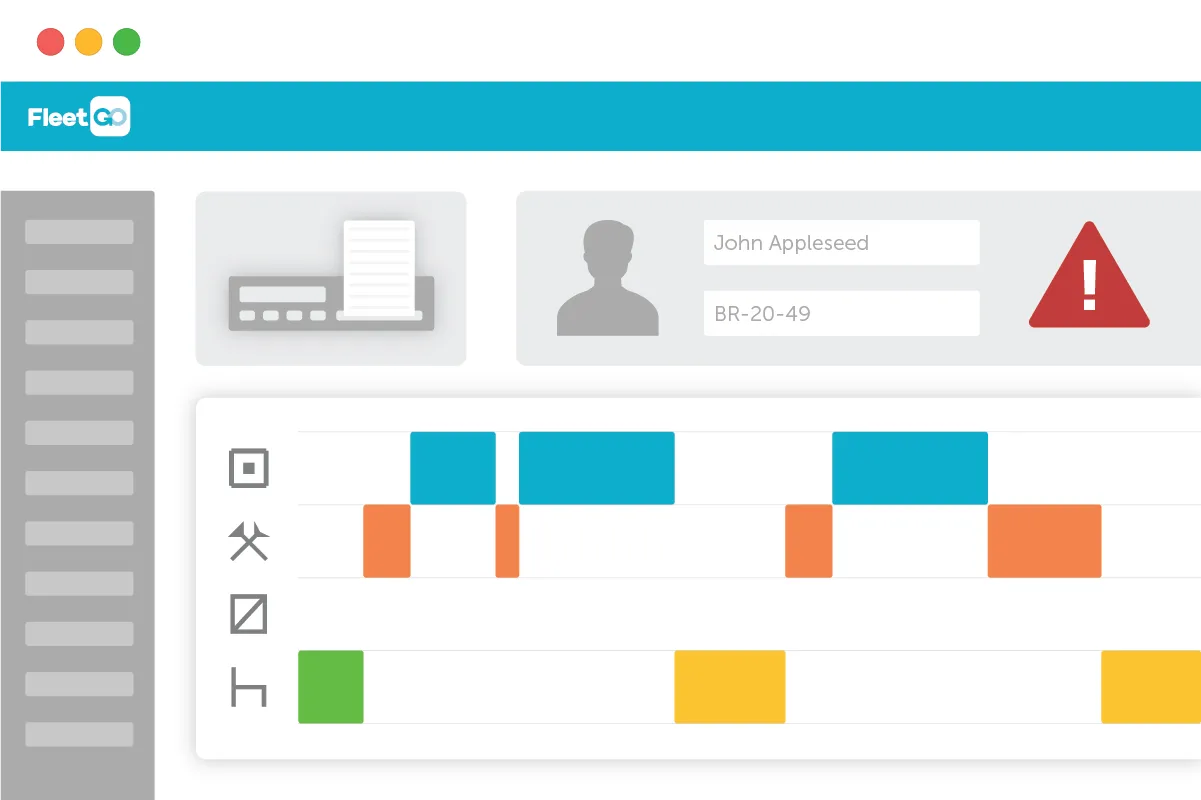Trucks and heavy goods vehicles can be dangerous due to their weight and may cause severe crashes. Hence, it is important for transportation and logistics companies to keep track of their vehicles and create a safe work environment for drivers. Most logistics businesses install electronic logging (e logging) devices to monitor vehicle operations. Electronic logging devices (ELD) track all driving activities throughout the day.

In the UK, digital tachographs have been a legal requirement since 2006 for commercial and goods vehicles. Tachographs record data on the driver and vehicle operations, saving it in the vehicle’s internal memory and a driver’s smart card. When the Annex 1C Legislation came into force in 2019, it became compulsory for commercial and goods vehicles to have digital tachographs. Electronic logging devices are the equivalent of digital tachographs used in the UK. Hence, companies that provide international transportation services may require both digital tachographs and ELDs when they cross the border.
ELD Meaning
ELD stands for electronic logging device. It is mandated electronic hardware that allows drivers and vehicle operators to track all driving activities. The digital device is connected to the engine of the truck or vehicle and automatically records data and monitors the vehicle’s current status. Electronic logging devices communicate with a vehicle’s engine control unit and receive information on the engine’s status. ELDs also provide accurate and real-time GPS location information to a logging device or application operated by the transportation company.
Never risk any tachograph fines again!
Get started with analysing your tachograph files with the FleetGO all-in-one tacho solution. Never miss an infringement again!
Chances of getting invested are higher than ever!

Who Uses an ELD?
Any driver or vehicle operator who was previously required to submit a Record of Duty Status (RODs) is expected to use an ELD. That includes commercial motor vehicle drivers, owner-operators, and truck drivers operating in the US. According to, a commercial motor vehicle is any car used to transport property or passengers for interstate commerce. A commercial motor vehicle requires an ELD if it meets the following criteria:
- It has a gross vehicle weight of over 4,536 kilograms or 10,001 pounds.
- It is designed to transport more than 8 paid passengers, including the driver.
- It can be used to transport hazardous materials.
- Commercial motor vehicles are required to maintain RODS for at least 8 days out of any 30-day operational period.
Drivers who don’t adhere to ELD rules are subject to various penalties and can be put out of service for 10 hours for operating without an ELD. Drivers required to use electronic logging devices should keep an information packet in their vehicles. The information packet should have an 8-day supply of blank driver’s RODS graph grids, a user’s manual, and an instruction sheet on transferring ELD data to a DOT official. The requirements for using the ELD only apply to trucks that operate outside UK borders. When you are in the UK, use a digital tachograph to track all the driving activities.
Exemptions
Drivers or vehicle operators not required by law to keep RODS logs don’t need ELDs in their vehicles. Other exemptions from electronic logging devices include:
- Vehicle engines made before the year 2000
- Drivers who use RODS for less than 8 days a month
- If the vehicle is a tow away or part of the shipment
- The vehicle qualifies under short-haul exceptions and isn’t required to keep RODs
- Vehicles transporting farm products and livestock
What Does an E-logging Device Do?
An ELD connects to the vehicle’s engine. It records various types of data and tracks hours of service. For instance, it automatically records the miles driven, driving activity, ignition status, and engine hours. The ELD sends engine and GPS location data to the fleet or logistics company, creating real-time reports. Drivers and fleet managers can use electronic logging devices to access electronic logging information. The software syncs with the fleet tracking management software to produce maps, reports, and compliance notifications. Some ELD uses include:
- Compliance: Electronic logging devices record hours of service and duty status according to the ELD mandate. Hence, commercial vehicles and drivers remain compliant with the mandate and eliminate the need for paper logs.
- Safety: Electronic logging devices have accelerometers that detect bad driving habits, such as hard braking, severe turns, and collisions. Fleet managers can collect data from the vehicles to monitor drivers’ behaviour and identify training opportunities to promote safer driving practices. The e-logs are also useful evidence against false accusations.
- Dispatch and routing: ELDs have in-built GPS devices that provide real-time information on the location of trucks or commercial vehicles. Fleet managers rely on this information to keep track of the location of their fleet and plan transportation routes effectively.
- Reporting: Electronic logging devices collect data for generating useful reports. For instance, a fleet manager can use the reports to monitor idle time, risky driving behaviour, long delivery times, and fuel consumption. The reports are useful in planning and supervising logistics operations.
- Geofencing: Some ELDs have geofencing capabilities, and fleet managers can use the acquired data to improve security and limit financial losses.
What Are the Benefits of E-logging Devices?
ELDs help drivers and vehicle operators avoid fines for log errors, driving hours over the daily allowance, and not having up-to-date driver logs. Using e-logging devices gives the driver peace of mind during DOT roadside inspections. In the UK, roadside inspections are done by the Driver and Vehicle Standards Agency (DVSA) examiner and can issue prohibitions if necessary.
Electronic logging devices are useful in lowering operational costs. By automatically recording driving activities, fleet managers can track vehicle operations closely. Aside from monitoring compliance, managers can optimise route planning and reduce delivery times. ELDs also help fleet managers identify driving habits that increase fuel costs. Identifying bad driving habits is useful when training workers on safe driving practices to lower traffic fines and crash rates. When vehicles have minimal fines and crash rates, it lowers insurance premiums.
How Much Does an ELD Cost?
The cost of ELDs depends on the features integrated. For instance, a single-function ELD is more affordable than a full-featured telematics system. The prices of electronic logging devices also depend on the hardware, installation process, and integrated features. Regardless of the price, the return on investment is achieved immediately from the data insights collected.
What Are the Similarities Between an ELD and a Digital Tachograph?
Tachographs used in the UK have multiple similarities to ELDs since they both record data from commercial vehicles. For instance, both devices record hours of service and driving time. A digital tachograph goes further by keeping track of driving activities, like when the driver takes a break or idle time. The 2 devices also record the distance travelled and vehicle movement. A digital tachograph has a Global Navigation Satellite System that records the vehicle’s location.
Conclusion
Electronic logging devices are types of telematics technology that ensure commercial vehicles adhere to the regulations. Manual tracking of drivers’ hours is hectic, but ELDs facilitate automatic data recording. With data from ELDs, fleet managers can avoid penalties and manage operational costs.
Sources:
Disclaimer
This content is provided for informational purposes only and is not meant to be an endorsement or representation by FleetGO.com or any other party. This information may contain inaccuracies or typographical errors, despite our efforts to ensure accuracy. FleetGO.com accepts no responsibility or liability for any errors or omissions, and is not responsible for the contents of any linked website or any link contained in a linked website. Please refer to our full disclaimer for more details.


